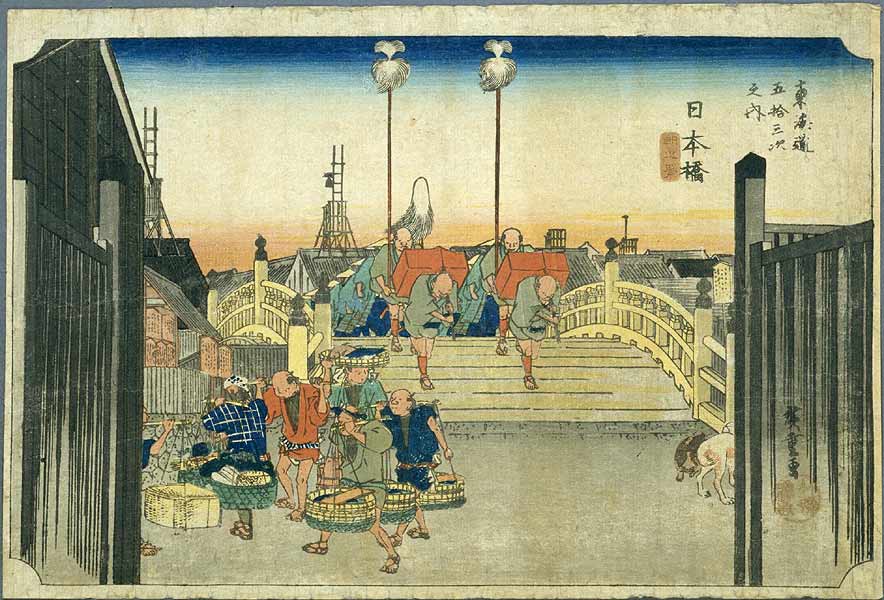Nihonbashi
Nihonbashi (literally Japan Bridge), or Nihombashi, is a business district of Chuo, Tokyo, Japan which grew up around the bridge of the same name which has linked two sides of the Nihonbashi River at this site since the 17th century. The first wooden bridge was completed in 1603, and the current bridge made of stone dates from 1911. The district covers a large area to the north and east of the bridge, reaching Akihabara to the north and the Sumida River to the east. Otemachi is to the west and Yaesu and Ginza to the south.
History
The Nihonbashi district was a major mercantile center during the Edo period: its early development is largely credited to the Mitsui family, who based their wholesaling business in Nihonbashi and developed Japan's first department store, Mitsukoshi, there. The Edo-era fish market formerly in Nihonbashi was the predecessor of today's Tsukiji fish market. In later years, Nihonbashi emerged as Tokyo's (and Japan's) predominant financial district.
The Nihonbashi bridge first became famous during the 17th century, when it was the eastern terminus of the Nakasendo and the Tokaido, roads which ran between Edo and Kyoto. During this time, it was known as Edobashi, or "Edo Bridge." In the Meiji era, the wooden bridge was replaced by a larger stone bridge, which still stands today (a replica of the old bridge has been exhibited at the Edo-Tokyo Museum). It is the point from which Japanese people measure distances: highway signs that report the distance to Tokyo actually state the number of kilometers to Nihonbashi.
Shortly before the 1964 Summer Olympics, an expressway was built over the Nihonbashi bridge, obscuring the classic view of Mount Fuji from the bridge. In recent years, local citizens have petitioned the government to move this expressway underground. This plan was supported by Prime Minister Junichiro Koizumi but opposed by Tokyo Governor Shintaro Ishihara. If implemented, the construction costs are expected to total ¥500 billion (about US$4+ billion)

